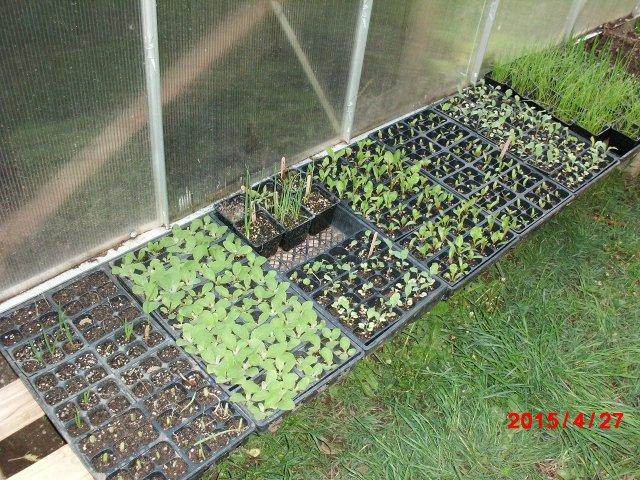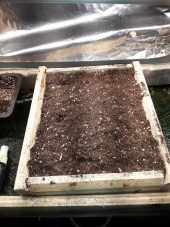Dennis:
What is the goal? Why are you starting things indoors?
I believe that understanding the answers to those questions may simplify your life...
I start seeds indoors for a few reasons:
1- To get a head start on weeds.
2- For season extension.
3- To give the plants a head start on the bugs.
4- To avoid spring dry spells.
Let me give some examples... My weather is too cold for fava beans to survive the winter. My spring is too short for fava beans to mature before the summer heat stops them from setting fruit. So I start fava beans about 3 weeks before the snow melts, and plant them into the garden within a couple days of snow melt. That extends the season long enough for them to make seeds for me. So the fava beans are planted outside about 7 weeks before I need the space to start growing tomatoes.
If I plant onion seeds into the garden, they get lost in weeds, because they come up so slowly. However, if I start them indoors before I start the fava beans, then I can have tiny onion plants ready to go into the garden in early spring, and they don't get lost so easily in the weeds. The onions are a cold hardy crop, so they can go into the garden a long time before I need the growing space for tomatoes.
Some crops are highly unsuited to being transplanted. I include tap-root crops in this category. Things like radishes, turnips, carrots, beets. It's too hard to avoid messing with the tap-root. Some crops tend to grow better for me if they are not transplanted. They include: fennel, garbanzo beans, cucumbers, melons, and squash. I don't transplant beans or squash, because the seeds are so big, and they jump out of the ground so quickly, that there is little advantage to transplanting.
Many crops grow best in cold weather. They can be planted between snow storms. If planted after the weather is warm, then they have lost most of their growing season. Cold weather crops include: peas, onions, lots of medicinals and herbs, orak, turnips, bok choi, cilantro, parsnips, kale. Crops that like slightly warmer weather, but still thrive in spite of freezing from time to time are chard, beets, carrots, cabbage. Crops that are very suitable for growing as cool-weather transplants include: Cabbage, kale, kohlrabi broccoli, and bok choi. And they can go into the garden before the space is needed for tomatoes.
Tomatoes and peppers are long season crops that start off slowly. My season is too short to grow them successfully if direct seeded, so I aim to have 6 to 8 week old plants ready to go into the garden after the last spring frosts. They are only about 4" tall when I plant them out, but I like that, cause they don't take up too much space.
First thing in the spring, my plants experience tremendous predation by flee beetles. I can direct seed cabbage, and it matures the same time as transplants. However, direct seeded cabbage is often so bug eaten that the crop is as likely as not to fail if direct seeded. A good timing for planting out cabbage is about 4 weeks after the favas go into the garden. So I can do successive planting in my indoor grow space: Favas --> Cabbage --> Tomatoes. Okra is another crop that I grow as transplants in order to get a head start on the bugs.
My spring rains are not consistent, so I have dry spells. My irrigation water doesn't come in until June. Therefore, I often have crop failures of direct seeded brassicas due to erratic germination. However, if I put transplants into the ground, they are big enough to reach the residual soil moisture and they thrive.
Also. Even if I am not ready to transplant things outside, the cool weather crops can be stored outside once they are within their comfort zone... Perhaps bringing them in only on the coldest of cold nights. Thus the space can be freed up for warmer weather crops.
Cool Weather crops being stored outside the greenhouse, because the space inside was needed for tomatoes, peppers, okra, etc.
These mullein plants were basically wintersown... Planted in weed-free potting soil, and allowed to germinate when they were ready. The seedlings are super tiny. Growing them in pots in weed-free soil allows them to be big enough to see at transplant time. This sort of sowing is particularly useful for species with tiny seeds that take a long time to germinate.
Might as well direct seed plants that germinate quickly and grow fast, like calendula, fenugreek, chia, corn, beans, squash, muskmelons, cucumbers, borage, mustard, and peas.





 2
2












 1
1













 I am excited for the growing season this year!
I am excited for the growing season this year!




 1
1



















